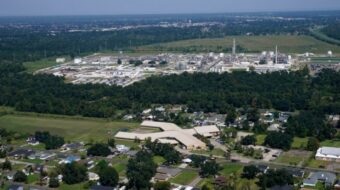
As people in the South continued counting their dead and rescuing the living, President Obama on April 29 rushed to towns in Alabama slammed hardest by tornadoes.
His flight to Tuscaloosa passed over many miles of destruction and when he arrived there he drove through flattened neighborhoods buried in debris. “I’ve never seen devastation like this,” the president said. “It’s heartbreaking. We’re going to make sure you’re not forgotten,” Obama promised.
At least 300 people across six states died in the storms, 210 in Alabama alone. Many thousands are injured with tens of thousands left homeless.
The president saw the homeless as they carried their belongings in cloth and plastic bags and as they dug through piles of rubble to find any precious item they could save.
The night before he arrived the cries of trapped children could be heard coming from beneath the rubble in Tuscaloosa.
For all his talk about keeping the federal government off Alabama’s back, Republican Gov. Robert Bentley had not a word of objection to the President’s announcement that under his emergency declaration massive federal aid was forthcoming.
“What’s amazing is when something like this happens folks forget all their petty differences,” Obama said, after talking to the officials. “When we’re confronted by the awesome power of nature we’re reminded that all we have is each other.”
The president visited an elementary school where the principle and a school nurse had lined up clothes and supplies on the floor. They were at the school since the day before, when the storms began. “Thank you for helping and I’m glad you’re okay,” he told the two educators, who said protecting children was their job.
Education workers in Alabama were the first workers to have their collective bargaining rights and organizing rights taken from them by GOP lawmakers.
Alabama county governments were already reeling from the economic crisis and, in Alabama’s case, cutbacks carried out by state Republican lawmakers.
Many in local government are struggling to find other ways to provide cleanup and emergency services.
“There are federal emergency management funds that we will make an application for,” said financially strapped Jefferson County Commissioner Joe Knight, in a phone interview. The county became eligible for those funds the moment the president signed his emergency declaration for the state.
The county has been hurting, local officials say, both because of loss of tax revenue from unemployed workers and because of state government cutbacks.
The county is also trying to get money from a disaster fund operated by the U.S. Department of Housing and Urban Development. Frederick Hamilton, the director of the county’s community development department, said community storm shelters are lacking and need to be built.
Storm relief is also made more difficult because millions of dollars in tax revenue are owed to Alabama counties by large corporations and banks. Jefferson County officials say relief efforts could be more successful if they could tap into a $75 million reserve owed by JP Morgan.
One official, on condition of anonymity, said poverty in the region made things worse than they might otherwise have been. “If all neighborhoods had better warning systems, like the ones in wealthier areas, people would have more time to take cover. Poor people here in Alabama live in some of the most poorly constructed housing. Some of the construction materials used around here would hardly pass any kind of inspection in another part of the country.”
The tornado outbreak goes down in history as one of the worse ever. Some scientists say it is another result of the global warming crisis. Warming creates wetter conditions in tornado country, they say, and wetter conditions in Tornado Alley mean bigger and more tornadoes.
Image: Cullman, Alabama, aftermath. Tabitha Kaylee Hawk // CC BY 2.0










